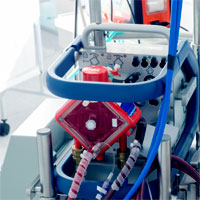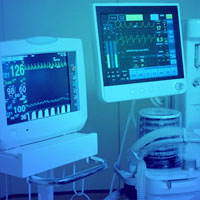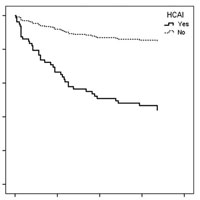Tag: mechanical ventilation

Inter-Rater Reliability Between PICU Nurses Performing a Modification to the Glasgow Coma Scale
The objective of this study was to estimate the inter-rater reliability of critical care nurses performing a pediatric modification of the Glasgow Coma Scale in a contemporary pediatric intensive care unit (PICU). All... read more

Management of Cardiogenic Shock
Cardiogenic shock (CS) remains the most common cause of death in patients with acute myocardial infarction although mortality could be reduced from formerly ∼80% to 40–50%. In addition to percutaneous coronary intervention... read more

A Core Outcome Set for Critical Care Ventilation Trials
The main objective for this study was to obtain international consensus on a set of core outcome measures that should be recorded in all clinical trials of interventions intended to modify the duration of ventilation for... read more

Essentials of Mechanical Ventilation
The acclaimed application-based guide to adult mechanical ventilation, updated to reflect the latest topics and practice guidelines. This practical guide is written from the perspective of authors who have nearly 100 years'... read more

How Best to Set the Ventilator on Extracorporeal Membrane Lung Oxygenation
Mechanical ventilation and extracorporeal support are marginally integrated. The best environment for lung healing – complete lung collapse or protective ventilation strategy or fully open and immobile lung (all three conditions... read more

Core Outcome Measures for Critical Care Ventilation Trials
The main objective for this study was to obtain international consensus on a set of core outcome measures that should be recorded in all clinical trials of interventions intended to modify the duration of ventilation for... read more

Emergency Department Hyperoxia Associated with Increased Mortality in Mechanically Ventilated Patients
Emergency Department exposure to hyperoxia is common and associated with increased mortality in mechanically ventilated patients achieving normoxia after admission. This suggests that hyperoxia in the immediate post-intubation... read more

Effect of an ICU Diary on PTSD Symptoms Among Patients Receiving Mechanical Ventilation
Keeping a diary for patients while they are in the intensive care unit (ICU) might reduce their posttraumatic stress disorder (PTSD) symptoms. Among 657 patients who were randomized completed the trial. At 3 months, significant... read more

Integrating host response and unbiased microbe detection for lower respiratory tract infection diagnosis in critically ill adults
Lower respiratory tract infections (LRTIs) are the leading cause of infectious disease-related deaths worldwide yet remain challenging to diagnose because of limitations in existing microbiologic tests. In critically ill... read more

Variation in Identifying Sepsis and Organ Dysfunction Using Administrative Versus Electronic Clinical Data and Impact on Hospital Outcome Comparisons
Variation in the accuracy of claims data for identifying sepsis and organ dysfunction limits their use for comparing hospitals' sepsis rates and outcomes. Using objective clinical data may facilitate more meaningful hospital... read more

Long-Term Outcome after Prolonged Mechanical Ventilation
Among patients receiving prolonged mechanical ventilation at an LTACH, 53.7% were detached from the ventilator at discharge and 1-year survival was 66.9%. Respiratory strength was well maintained, whereas peripheral strength... read more

Impact of Hypophosphatemia on Outcome of Patients in ICU
Hypophosphatemia at admission is an independent risk factor for 28-day mortality in general ICU patients. The cohort included 946 patients with a median phosphate concentration of 0.77 mmol/L. Patients with hypophosphatemia... read more

Noninvasive Ventilation Through the Helmet Can Be Used For Early Mild and Moderate ARDS
Debating data have been published as regards the beneficial or deleterious effect of spontaneous breathing (SB) in comparison to controlled mechanical ventilation (CMV) during acute respiratory failure. Spontaneous breathing... read more

Post-discharge Impact of Healthcare-associated Infections in a Developing Country
The impact of healthcare-associated infections (HCAIs) on in-hospital mortality, morbidity, length-of-stay, and costs has been extensively reported. However, few studies have focused on the follow-up of HCAI-affected subjects... read more








